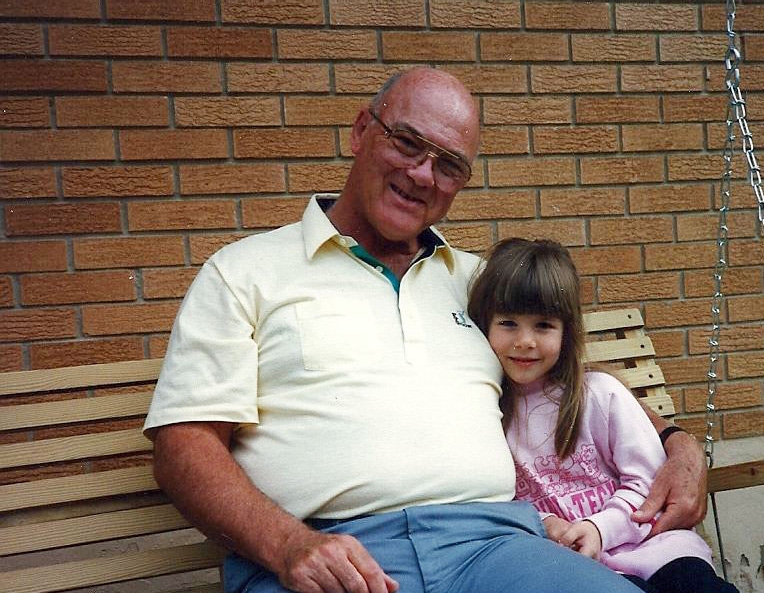Best Practices in Intergenerational Programming: Practice 8
ID
FCS-41P (FCS-161P)
EXPERT REVIEWED

Facilitators skillfully stage the environment to promote interaction.
Practice 8 • Environment
Intergenerational programs are most effective when facilitators skillfully stage the environment to promote interaction.
Successful programs carefully design the physical space, the program, and related policies to be flexible. When the environment has been carefully designed to optimize small-group interaction, it serves to guide children and adults to explore and interact within it, thereby increasing learning and socialization.
- A properly prepared environment can serve as the “third teacher.” Forethought must be given to each activity in order for the third teacher to be valuable (Stonehouse 2011).
- Eliminate distractions such as the radio and TV.
- Limit the amount of materials made available; this provides a reason to share.
- Mix or alternate child and adult chairs.
- Allow programming location to vary; for example, use the children’s classroom to offer variety and flexibility.
- Provide adaptive equipment if needed (see Virginia Cooperative Extension publication FCS-43P, “Best Practices in Intergenerational Programming Fact Sheets, Practice 10: Adaptive Equipment Is Used as Appropriate;” see Additional Resource section).
- Encourage creativity and feelings of success with open-ended materials that do not prescribe one right way of doing an activity (as opposed to precut shapes or pages from coloring books).
- To be more sensitive, take a self-directed walk around the space. Move on your knees to gain a child’s perspective, then use a walker, cane, or wheelchair for an adult’s perspective.
Application of the Practice
Setting out the materials for an activity is only one part of removing barriers for success.
Consider:
- Choose a large print size for materials.
- Offer outdoor seating areas.
- Clear walking paths.
- Provide chairs with arms.
- Ensure wheelchair accessibility to all spaces, inside and out.
- Use appropriate language for special abilities.
- Offer accessible materials.
- Provide good lighting.
Program Ideas
Following are some ideas for setting up a collaborative, barrier-free environment:
- Set up the activity for interactions. Consider the space and how the materials are arranged. Think about how to engage partners prior to the activity.
- Invite conversations by using interesting pictures and objects in the setting.
- Reflect the interests of children and adults with materials, pictures, decorations, or objects.
- Even in adult environments, consider dividing the space by learning centers so it is easy to access activity areas spaced throughout the room(s).
- Display the work of children and adults so they may revisit it and discuss it.
- Include a photo of pairs working together on the displayed item.
- Include comfy areas where snuggled reading or relaxing can occur.
- Have a backup plan when using technology or in case an activity ends early (such as a beanbag toss or storytelling).
- Make materials appropriately accessible to participants; encourage choice from activity centers and materials.
- Provide adult-size chairs in children’s spaces and children’s chairs that are tall enough to reach the table where adults and children work together.
- Check that the floors in children’s spaces are clear of items before elders visit.
Best Practices for Intergenerational Programming
- Staff members of the adult and child programs collaborate to plan activities.
- Participants are involved in decision-making about the activity and during activities.
- Participation is voluntary.
- Participants are prepared ahead of time and reflect on the activity afterward.
- Activities reflect interests, backgrounds, and social histories of program participants.
- Activities are age- and role-appropriate.
- Activities support interaction among intergenerational participants.
- Facilitators skillfully stage the environment to promote interaction.
- Facilitators consider the social environment and the role of staff members.
- Adaptive equipment is used as appropriate.
- Facilitators document and communicate experiences to build on in future activities.
Additional Resource
Jarrott, S., and K. DeBord. 2013. Intergenerational Best Practices Fact Sheets, Practice 10: Adaptive Equipment Is Used as Appropriate. Virginia Cooperative Extension Publication FST-43P. http://pubs.ext.vt.edu/FCS/FCS-43/FCS-43.html.
Reference
Jarrott, S. E. 2011. “Where Have We Been and Where Are We Going? Content Analysis of Evaluation Research of Intergenerational Programs.” Journal of Intergenerational Relationships 9:37-52. doi:10.1080/15350770.2011.544594.
Stonehouse, A. 2011. “The ‘Third Teacher’: Creating Child-Friendly Learning Spaces.” National Childcare Accreditation Council, Australia. Putting Children First 38 (June): 12-14.
http://ncac.acecqa.gov.au/educator-resources/pcf-articles/P12_
ChildFriendlySpaces_Jun11pdf.pdf.
Project TRIP
A Children’s, Youth, and Families at Risk project of Virginia Tech.
Shannon Jarrott, Professor, Social Work, The Ohio State University
Karen DeBord, (retired) Extension Specialist, Virginia Tech
Contact: Crystal Tyler-Mackey, Extension Specialist and Leader, Community Viability, Virginia Tech, cmtyler@vt.edu.
Intergenerational programs are those that connect younger and older generations to foster positive experiences. Research continues to grow, noting that when successfully delivered, intergenerational programs result in positive health effects, child learning, and appropriate socialization for both young and old (Jarrott 2011). For more information on IG practice, visit https://u.osu.edu/bridge2health/.
The eighth practice relates to the environment.
Virginia Cooperative Extension materials are available for public use, reprint, or citation without further permission, provided the use includes credit to the author and to Virginia Cooperative Extension, Virginia Tech, and Virginia State University.
Virginia Cooperative Extension is a partnership of Virginia Tech, Virginia State University, the U.S. Department of Agriculture (USDA), and local governments, and is an equal opportunity employer. For the full non-discrimination statement, please visit ext.vt.edu/accessibility.
Publication Date
October 24, 2025



